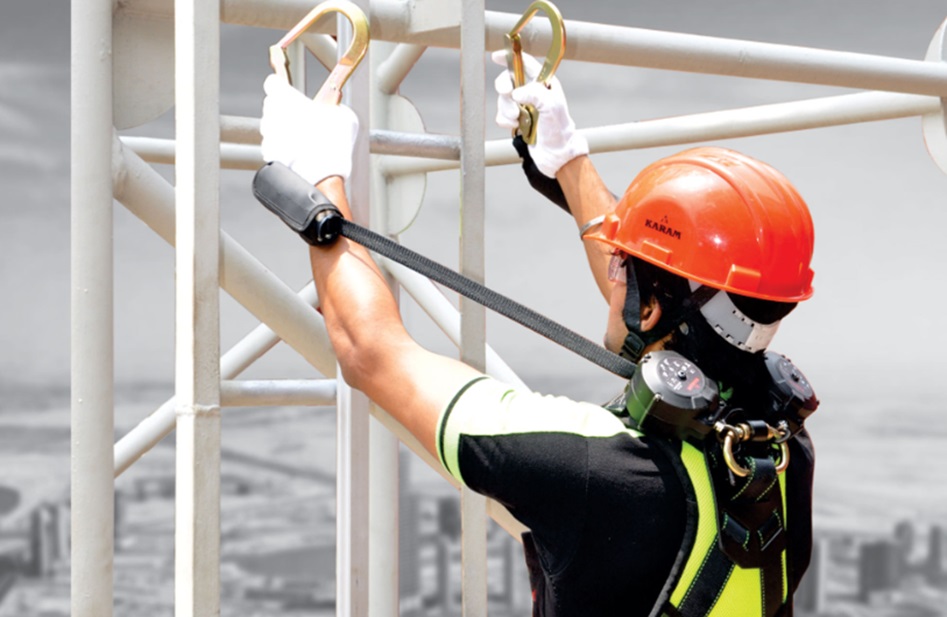Working on the construction site comes with its fair share of risks, among which height-related accidents are remarkably common. To ensure the well-being of workers and to maintain a safe work environment, it’s crucial to implement effective height safety solutions. In this post, we will delve into ten essential measures that can drastically minimize the risk of height-related mishaps.
1. Personal Protective Equipment (PPE)
The first line of defence against falls from height is Personal Protective Equipment (PPE). This includes harnesses, lanyards, and helmets, all of which are designed to protect the worker from severe injuries in case of a fall. It’s important to choose quality PPE that meets industry standards and is suitable for the specific tasks at hand. Additionally, proper training should be provided to all workers on how to use them correctly and effectively.
2. Fall Arrest Systems
These systems are a critical part of height safety solutions. These systems are designed to stop a fall in progress. They work by attaching the user to a secure point, ensuring they don’t hit the ground or any structure below them should they fall. Fall arrest systems provide a crucial safety net, allowing workers to execute their tasks without fear of falling.
3. Guardrails and Barriers
Installing guardrails and barriers at elevated work areas is another crucial measure to ensure safety. These physical barriers prevent workers from accidentally stepping or falling off edges. They serve as a constant reminder of the danger zones within the worksite and provide an additional layer of protection against falls.
4. Safety Netting
Safety netting acts as a catch platform for falling workers or debris. Positioned strategically below high-risk work areas, it provides an additional layer of protection. Safety nets can save lives by catching individuals who fall and can also protect people working underneath from falling objects.
5. Proper Training
No amount of equipment can substitute for proper training. All employees should be thoroughly trained in working at heights, including the correct use of safety equipment and emergency procedures. Training should be repeated at regular intervals to ensure that safety measures are always fresh in the minds of the workers.
6. Regular Inspections
Regular inspections of equipment and the worksite can help identify potential hazards before they cause accidents. This includes checking the integrity of PPE, scaffolding, ladders, and other safety measures. Inspections should be carried out by trained professionals, and any issues found should be promptly addressed.
7. Safe Work Procedures
Implementing safe work procedures is another vital aspect of height safety. This includes carefully planning the work, defining safe routes, and establishing communication protocols among workers. These procedures should be documented and made available to all workers on the site.
8. Rescue Plans
In case a fall does occur, having a well-defined rescue plan can make a significant difference. The plan should detail how to quickly and safely rescue a fallen worker to prevent further injury. It should also outline the medical procedures to follow in case of an accident.
9. Fall Prevention Equipment
Fall prevention equipment such as safety harnesses and lifelines are designed to prevent falls from happening in the first place. These tools are essential in high-risk environments where working at heights is unavoidable. They provide workers with the freedom to move around while still being securely attached to a fixed point.
10. Creating a Safety Culture
Finally, fostering a culture of safety within the organization is key. This involves conducting regular safety briefings, encouraging workers to voice concerns, and rewarding safe practices. A strong safety culture can significantly reduce the risk of accidents by making safety a top priority for everyone on the site.
By implementing these height safety solutions, construction sites can become significantly safer for workers. Remember, while these measures require investment, the cost of not implementing them could be much higher, both in terms of human life and potential legal repercussions. Safety should always be a top priority in any construction project.




